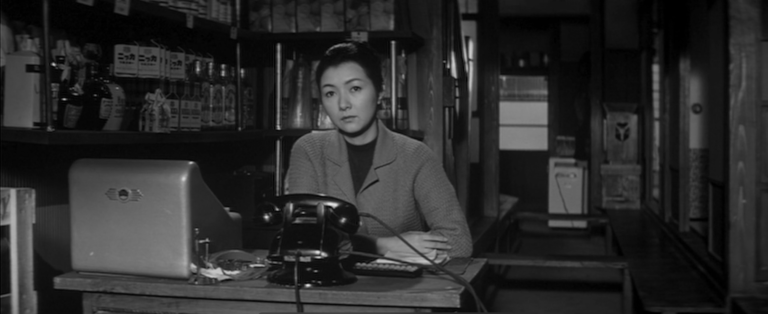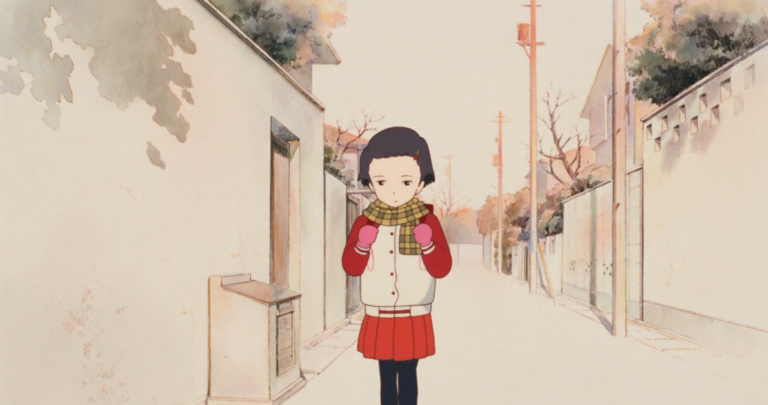Sometimes, I feel sorry for those who dismiss anime as a genre that deals with childish themes. Anime usually gets this rep because its Western counterpart is a giant mouse that boxes animation into a zone wherein the only things its characters are capable of are comforting platitudes. When you subscribe to that parochial school of thought, my only question is this – be it childish; aren’t you curious as to what those years contain beyond the platitudes that you’ve been served so far? Don’t you wish to understand, from a spectator’s perspective, what you and those around you felt? Anime is a beautiful form where what transpires on-screen allows you to access a period that time makes it impossible to walk into again.
What, for me at least, makes this even more incredible is a broader understanding of Japan’s cinematic history. My earliest introduction to Kurosawa was when I watched Seven Samurai as early as the age of 17. Since then, I’ve savoured large parts of his work and those of his contemporaries. Therefore, to see Japan move from a very austere and introspective modality into this explosively expressive art form is flooring. From Ozu’s ability to prolong your breath with his unbroken scenes to Satoshi Kon’s rapid cuts and stitches, Japan has truly had two distinctive periods of Cinema to offer.
A Silent Voice joins a long list of animated productions that defy the tag of naivety that precedes them. Though its theme of suicide is universal, it’s particularly painful for Japan. When you take the older stable of films, the communal side of Japan that bore the brunt of the Second World War has many sympathizers – mainly Ozu. Scathing and sardonic in equal measure, most of his movies were paeans to a past that he thought was dying as an aftermath of the war. I’d say he had ominous premonitions within him for what was to come in the future; he wouldn’t have been so didactic otherwise. With the advancement that came, so did unintended social consequences. Not many countries in the world today provide the conditions for one to live more closeted than in Japan.
Psychologically, our developmental years plant the foundations for either trust or suspicion, kindness or hatred. As we grow, it becomes easier to attribute it to the responsibilities that abound around us. Yet, the need to question that wayward phase towards the end of high school is never foremost in our minds. It’s exactly in this space that A Silent Voice exists. It drills into the minutiae of teenage life – should I speak to her? Did she look at me? Wouldn’t it be better if I hung out with them? All these questions that float through our heads are the process of us divining what the unspoken rules of society are. For some, it makes their head throb so hard that they wish they could flip a switch and summon silence instead.
Ishida, the film’s protagonist, probably wishes the same as well. Bully at first, his waywardness and crippling need to confirm push him to do what he does. He picks on Nishimiya, the deaf girl who is adamant with her optimism. Though the film in its earlier stages positions itself taking the direction of understanding the bully-victim complex, it tactfully circumvents it without detracting from it. It pulls out to focus on the larger cycle of perpetuated fear and hate. When his actions are met with consequences, he’s left in the lurch by his friends and finds himself at the other end. Yamada places this within a very short montage that punctuates this inversion – from spurting water on Nishimiya’s head, he has it spurted on his own.
Animation, in general, allows you to do certain things with more seamlessness than live-action. The barriers to fulfilment between thought and completion are relatively lower. For instance, it’s a lot harder to recreate images that zap through your head, unless you imagine them having already accounted for production deficiencies you will encounter when you go to shoot. It’s certainly never a given to re-construct that image, and rarely do directors have their wishes granted. So, with that element of compromise being ever-present, anime is a medium that presents an offset. When animators imagine through that world, it’s easier to transport an audience closer into the minds of its characters. This feature of dreams, thoughts, and inhibitions bleeding into one conscious presentation is striking in A Silent Voice. When Ishida swirls towards suicide in the opening passage of the film, dreams and days mesh until he falls off the bridge. In other passages, Yamada steals into the narrative certain surreal occurrences – a short nightmare where Yuzuru imagines Nishimiya’s death transpire as it would in ones’ dreams. The ability to weave those in without delineating what’s real and what isn’t, much like hurtling thoughts in a mind, is arguably anime’s greatest facet.
The theme itself requires delicate care. Suicide is a heavy subject, and more so if you’re dealing with teenage suicides. It’s a world where the smallest of infractions – a sneer or passing remark – can send people on a train of thought that lasts for weeks. Yamada doesn’t pigeon-hole herself into a zone where she only examines reconciliation from a bully’s perspective, but she gradually weaves in a global theme where nearly every character struggles with questions of self-worth. Nishimiya prompts Ishida to reflect, and his actions help Yuzuru feel more comfortable. Like balls in Newton’s cradle, they ricochet off each other and feel comfortable when they see parallel struggles. But some crack more under pressure than others – Ishida and Nishimiya remain the most fragile in the group. Yamada handles Ishida’s schoolboy-ish anxiety perfectly, with the X marks against the faces of his classmates and peers – almost as if he feels they are inaccessible islands on a map.
Yet, the film fails to register the impact it could have had. I may sound overly critical, but that’s only when I feel a film has come so close to the zenith of something that it’s fallen short only by a few steps. Yamada’s indecisiveness with the editing knife leaves a lot of flab and, sometimes, less context. As Ishida pieces together a social circle again, we don’t get to see many exchanges between them, except in a few cases. This absence, particularly when they split up and Ishida goes off on another spiral, makes the later passages feel rushed. You’re left grappling with the question, “didn’t it seem more like a momentary tiff between friends”? But to her credit, when you try to balance many global themes and interlace some levity to avoid long passages of heavy emotion, you’re bound to fall short of a balance.
Regardless, A Silent Voice is an exquisite watch. It manoeuvres through a multitude of emotions and ties it all together to produce many cathartic moments. The soundtrack by Agraph and Kensuke Ushio is right up there with the greatest OSTs of anime productions. The softest piano notes that jump into scenes with generous yellow hues construct this palatial realm of warmth that you’d never want to exit. For me, it will always be dear because I grew up watching hours of Japanese shows before I ventured more into Western sensibilities in the years that followed. If you ever felt that this is a realm of childish exchanges with large-eyed characters, this film could be an invitation to a world that contains so many convulsive emotions.





